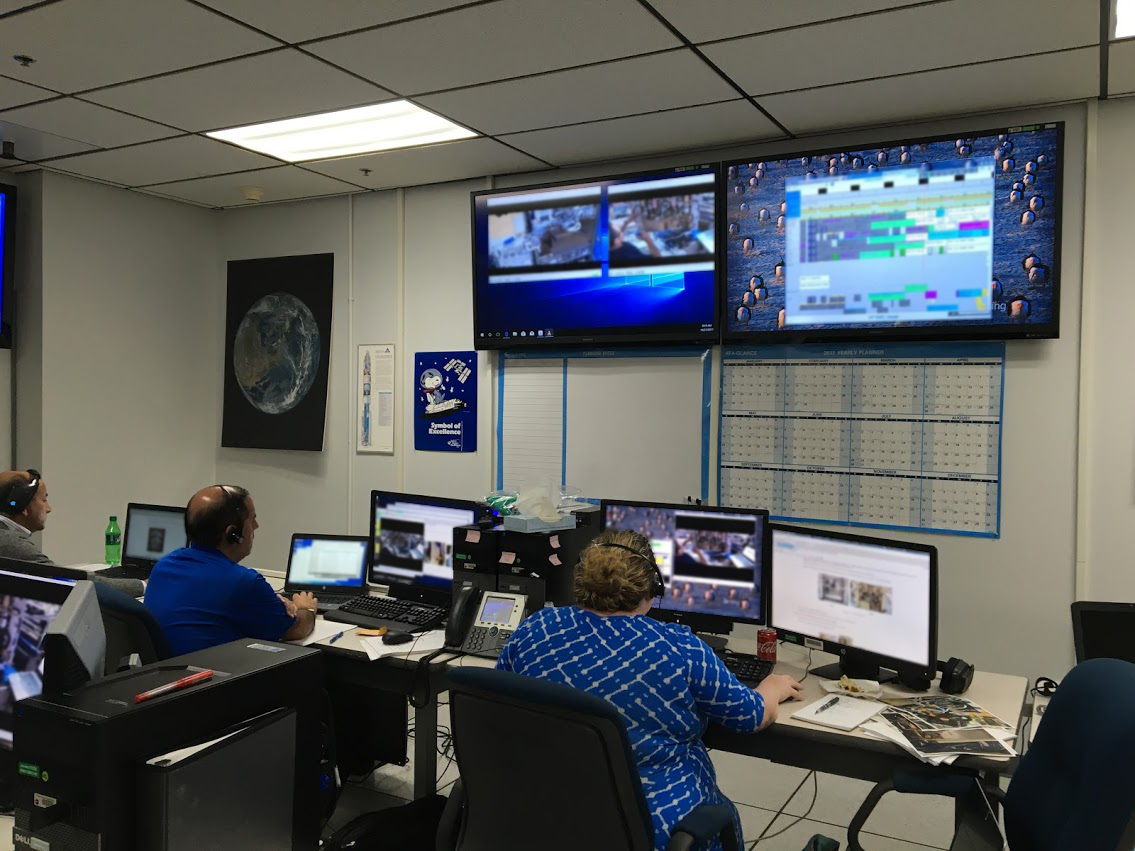NASA soon will better understand how plants grow in space with the help of a new, fully automated plant growth facility called the Advanced Plant Habitat, or APH, aboard the International Space Station. With its first grow out initiated in January, the habitat will be used to conduct plant bioscience research. Investigation data will help the agency prepare crews to grow their own food in space during deep space missions.
Expedition 54 astronaut Joe Acaba worked through the procedures to open and prep the plant habitat. Supported by researchers in the Experiment Monitoring Room in the Space Station Processing Facility at the agency’s Kennedy Space Center in Florida, he carefully installed the science carrier containing Arabidopsis and dwarf wheat seeds, and then reinstalled the door and acoustics blanket that was built for the APH to dampen the sound when the fans are running on high.

According to Bryan Onate, APH project manager, the plants will be allowed to grow for about five weeks, under red, blue and green LED lights. The Arabidopsis seeds will grow for the first 2.5 weeks, and then the dwarf wheat will grow the last 2.5 weeks.
“The test will help us validate the APH with plants and to determine if the planting procedure is good as we get ready for our first science mission,” Onate said.
The APH is a fully enclosed, closed-loop system with an environmentally controlled growth chamber. The habitat is equipped with a monitoring system, the Plant Habitat Avionics Real-Time Manager, or PHARMER, that provides real-time telemetry, remote commanding and photo downlink to the team at Kennedy.
The system will record data from its 180 sensors, including water usage, carbon dioxide levels, light levels, temperature, humidity and oxygen in the growth chamber, and temperature, humidity and oxygen levels in the plant root systems, and send it back to Kennedy for analysis.
“We plan to monitor the performance of the sensors with data that is collected every five seconds and take two pictures per day from each of the three APH cameras,” Onate said. “We will use this data to make adjustments, if required.”
Howard Levine, Ph.D., is the Kennedy project scientist who helped develop the APH, and was one of the scientists who helped design the science requirements for the hardware and the test plan to validate it.
“Pending a successful demonstration of the system’s ability to grow wheat and Arabidopsis plants from seed in this test run, we will have our first official experiment in the APH in May,” Levine said.
Norman Lewis, Ph.D., of the University of Washington at Pullman will conduct an investigation with Arabidopsis.
The plant habitat was delivered to the International Space Station aboard two commercial resupply missions in April and June 2017 and installed in the Japanese Experiment Module Kibo. It was sponsored by NASA’s Space Life and Physical Sciences Research and Applications Division, and developed by NASA and Sierra Nevada Corp. (formerly ORBITEC) of Madison, Wisconsin.
A new mixed crop of Outredgeous red lettuce, Mizuna mustard and Wakemann’s Green lettuce plants also soon will grow in NASA’s Veggie plant growth system in the Columbus module. VEG-03 E and F will be activated in the growth chambers Feb. 6 and 9, respectively. These tests will demonstrate cut and come again growth in two veggies simultaneously. Plant growth will be slightly staggered to provide continuous produce production.



























